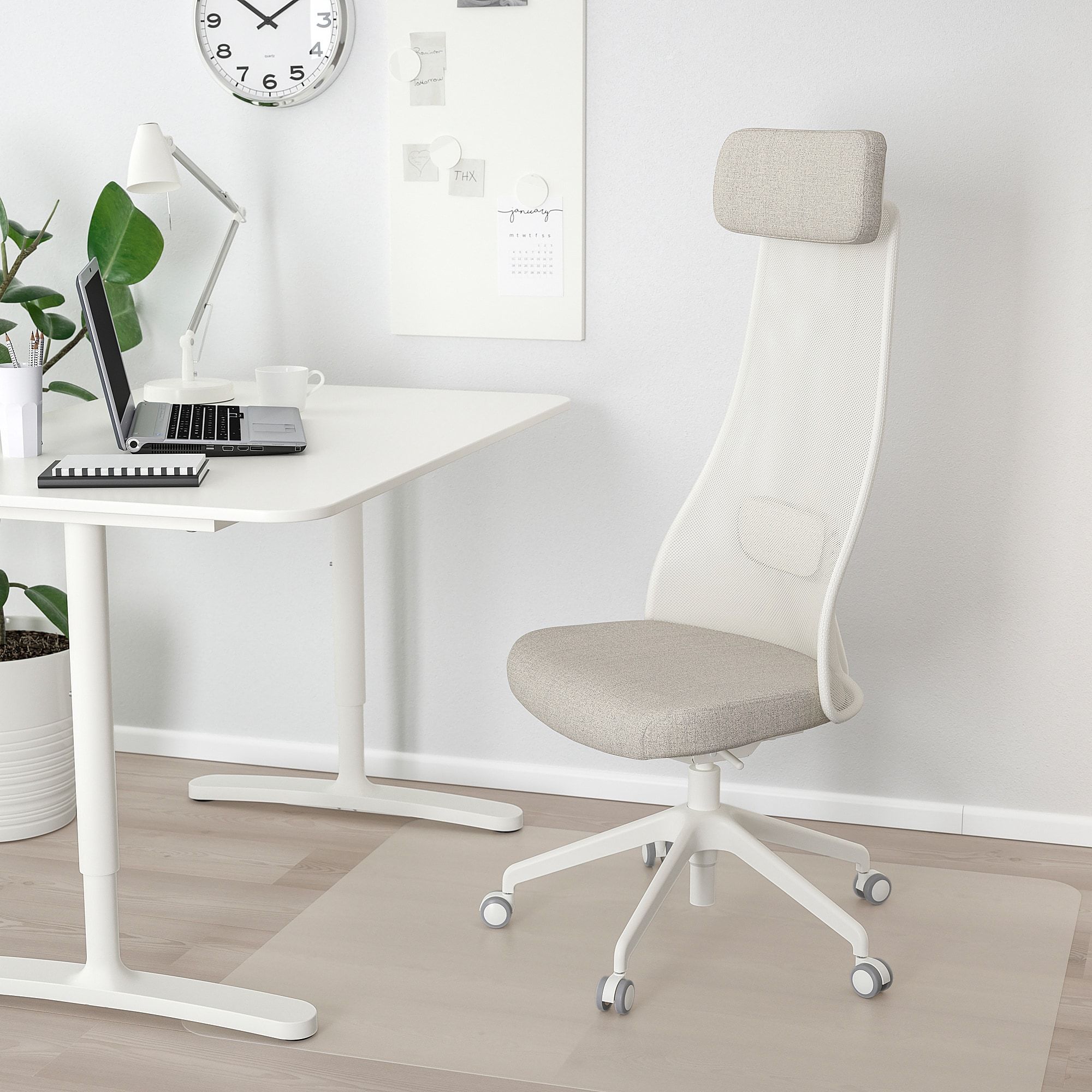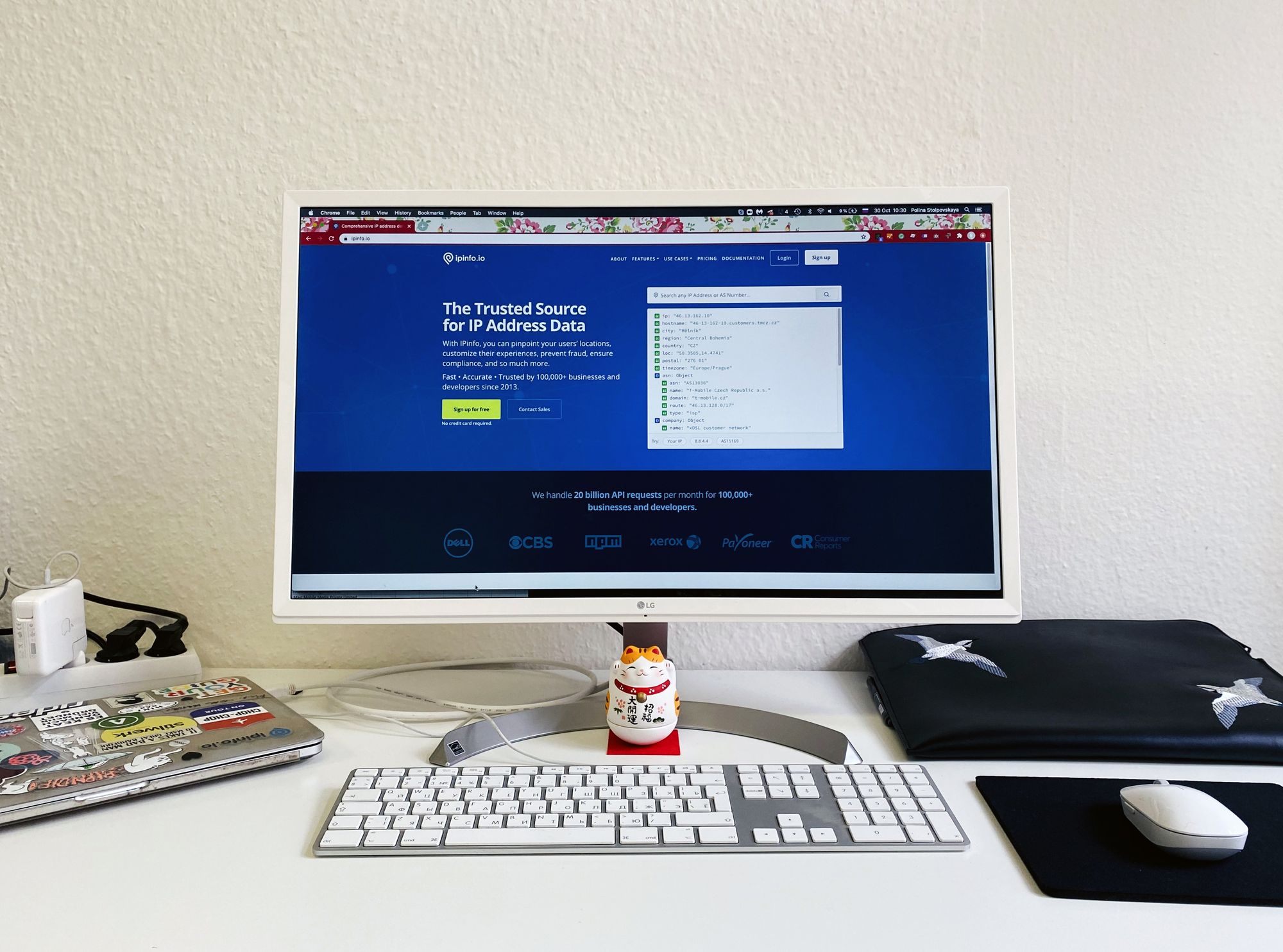During the last year at-home work skyrocketed practically overnight. And while many discovered all the benefits of flexible work schedules, they also realized that remote work comes with its own set of challenges.
That’s probably why over 61 percent of remote employees say they struggle with interruptions just from social media.
Since 2013 IPinfo has been 100 percent remote, allowing our remote staff to develop rhythms that keep us focused and fresh day in and day out. The result is that not only do we have experts in IP geolocation data, but we also have seasoned veterans of remote work.
Our location set says it all! From Australia to India, from Poland to Canada.

Here’s what our team has to say - working from home can be easier if you set up the right workspace.
1. Start the day right
If there’s anything we’ve learned along the way, it’s that going straight from bed to work is not the best way to start a workday. Many of our team recommend establishing a morning routine that includes spending time with family or exercising before jumping on the work computer.
And while this may not seem like a remote workspace setup tip, it’s a “mindset-up” tip that can make the difference between a frazzled or productive day. In addition, some also find that journaling or taking a quiet minute away from screens in the morning also sets them up for success.
According to Ken, our Head of customer solutions, here’s why starting the day right is so important for remote workers like himself:
I find it useful to do an activity that marks a separation between home life and work life (e.g. when I start work in the morning, I take my son and dog for a walk around the neighbourhood and only then do I “start” work.)
But regardless of how you choose to prepare for the day, here’s the point - it’s super important to have a morning routine that gives you energy at the start of the workday.
2. Designate a workspace
Separate office space helps remote workers create distinction between home life and work life - a line that becomes very blurred when always at home. In recent months, those new to this lifestyle have discovered how difficult it can be to work while managing their kids’ school or playtime.
Since our team has been doing this for years, here’s what we’ve discovered along the way: dedicated office space within our own homes helps to alleviate this tension.
During work hours, many on our team stay as remote as possible from their children. That way they can stay focused while working but be able to spend quality time with their kids once they leave their designated workspace.
In other words, finding a quiet (or quieter) place to work can help you enjoy more of the perks of at-home work (such as more time with family). But without some boundaries, the benefits of remote work can start to look more like frustrations.
3. Invest in the right chair
Those who plan to work from home for the foreseeable future quickly realize that sitting on a sofa isn’t as cushy as it seems. That’s why many of our team not only have their own dedicated workspaces but have customized those rooms to fit their work rhythms.
While at first glance it may seem trivial, one of the most important features of designated workspaces are healthy seating options - options that don’t lead to joint damage in the long run. Because of this, some on our team have hunted for the perfect chair.

Here are some good options when choosing a chair:
- Standard ergonomic chair: If you’re looking for function over style, this ergonomic option is affordable and ergonomic for those who end up sitting long hours throughout the day
- Standing desk chair: Available on Amazon, this seating option works well for standing desks.
- Adjustable support chair: This chair from IKEA has adjustable back and neck support, flexible height options, and the ability to recline. For those looking for multiple seating positions, this chair is a must-buy.
- Alternative seating options: Some people, however, prefer posture-correcting fitballs. And still others find knee chairs a great alternative to office chairs.
But regardless of what seating option you choose, keep in mind that the whole goal of office furniture is to help you stay productive, motivated, and comfortable - both mentally and physically.
4. Find the best desk
Just like office chairs, desks are a must-have for remote workers. Thankfully, there are plenty of affordable seated desk options available from places like Amazon or IKEA. But here are four questions to ask yourself when choosing a desk:
- What kind of desk will help me stay healthy?
- Do I need extra storage?
- How much desktop space do I need?
- How many screens do I need?
Several on our team have invested in standing desks to give them more healthy options. But standing desks can be pricey, costing anywhere from $300 to over $1,000.
Others on our team have DIYed their own standing desks… to the point that their desk syncs with their health data and tells them when to stand! In short, if you’re interested in creating your own standing desk, IKEA is a great place to start. Not only can you choose your own desk frame, but you can also pick your own tabletop.
But as far as ready-to-go standing desks, here are some helpful options we’ve found:
- This standing desk (available on Amazon) adjusts at the click of a button. And it’s affordable, as far as standing desks go.
- IKEA, however, has the most affordable option if you opt for a manually adjustable desk. But their motorized desks aren’t too far off as far as price and functionality go either.
- Not sure if a standing desk is right for you? Investing in a standing desk converter is an easy way to decide if you like the concept.
- If you’re looking for more desk space, then Apex Desk has large desktop options as well as customizable height presets.
All this to say, there are so many options for customizing your workspace so you can stay healthy and focused even at home. And even if you do end up investing extra dollars in a good desk or chair, our remote team has found that it’s worth it in the long run.
5. Create a space that minimizes distractions
Our team also mentioned that distractions challenge their productivity more than almost anything else. In this, they’re not alone. Over 49 percent of remote workers struggle with distractions that negatively impact their work performance.
Life as the distraction
For instance, at home workers may open their computer only to see thirty notifications from social media. Or the Netflix show they watched last night is still pulled up on their screen. Or their kids need yet another snack, are having another Zoom call with their class, or just need someone to talk to.
Distractions everywhere. Some are very important and some less so. Shubham, one of our software engineers put it this way:
I think it’s important to realize that even without office, you should somehow be in the “office-mode”. Without work boundaries, it’s easy to get distracted by a new Netflix episode, something you are less likely to do when in office.
Several on our team mentioned that they manage distractions by scheduling intentional time with their kids before and after work. They’ve also found that noise cancelling headphones keep them focused even when kids are in remote school.
Additionally, during the workday, many shut off their social media notifications or turn their phone on Do Not Disturb.
Work as the distraction
But beyond that, work itself can distract from home life. If everyday life and work life become one and the same, the result is that some remote employees turn into chronic workers.
Our team members have faced many of these distractions, and have had to put intentional measures in place to keep work and home separate.
We’ve found that daily to-do lists help us stay on task while knowing when to stop. Taking a few minutes to plan out your day gives you more freedom to focus on your family or friends when you want to.
In short, each of our team members have developed habits that make it easy to settle into office mode. The result is that they keep distractions at bay while being able to enjoy the perks of working from home.
6. Schedule regular exercise
If you’re tracking, we’ve been talking about healthy lifestyles a lot! That’s because remote workers tend to spend way more time in front of a screen than those in a standard work environment.
In normal office settings, breaks happen naturally in the form of offline meetings and in-person conversations. That’s why it's so important for remote workers to balance sedentary work time with other physical activities.
Almost every team member at IPinfo mentioned the importance of exercise such as a midday walk or other workout to stay energized and focused.
And while our team has different rhythms for weekly exercise - some once a week and others every day - staying active seems to encourage creativity and motivation when working from home.
7. Know when you need variety
Many on our team have worked at home long enough to know when they need to spend the morning at a coworking cafe versus when they need to stick close to their home office.
Sure, COVID has limited external workspace options such as coffee shops. But the reality is that knowing when you need variety is necessary to stay fresh as a remote worker.
Variety, however, comes in many different forms.
Pomodoro technique
So if you can’t get out to work in another space, Petr, one of our software engineers, recommends trying the Pomodoro technique - a time management system that helps individuals stay productive by taking regular breaks.
With this method, once you’ve worked on a task for twenty-five minutes, you reward yourself with a short break to do a few squats, get a drink of water, meditate, or go for a brief walk. In this way, remote workers can train their brain to focus on one task and set aside interruptions.
Changing up your space
It’s also important to schedule intentional time outside of the office each day that doesn’t involve more screen time or additional sitting. For some, variety may be as simple as freshening up your office space with new plants or thematic decorations.

Admittedly, knowing when you need variety is more of an art than a science. But without voicing these challenges to each other, many on our team have come to realize that intentional workspace variety helps them stay productive.
What we’re trying to say about remote workspaces is that it is possible to be productive and efficient while still enjoying a flexible environment. With a little planning and intentionality, remote work can give you more time to spend with those you care about while being more productive than ever before.
Ready to learn how our remote team can help you use IP geolocation data better than ever? Connect with one of our team today!
